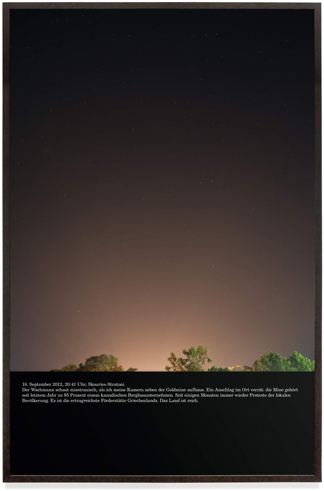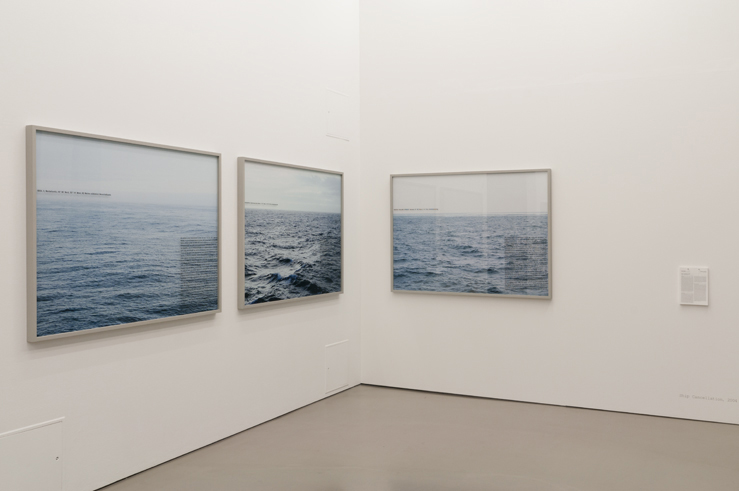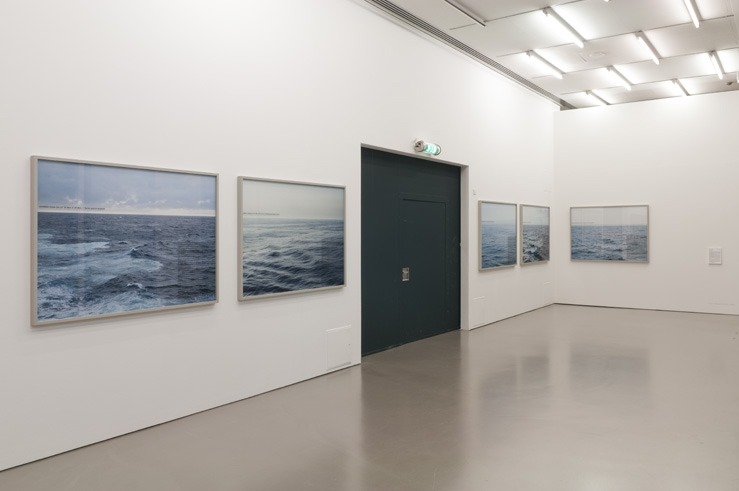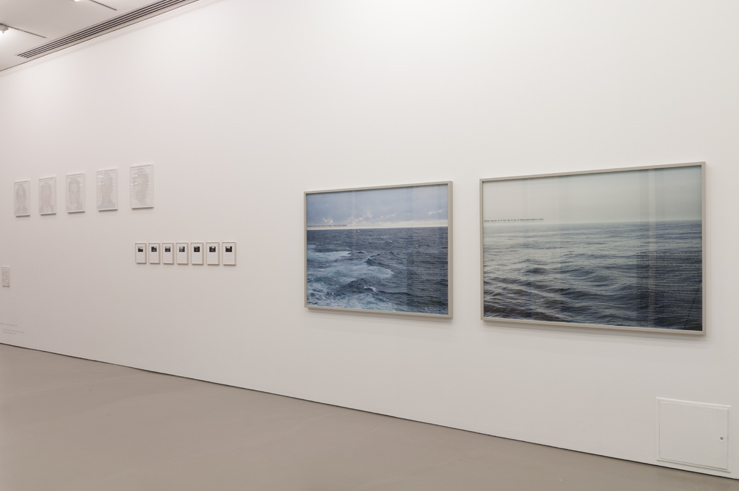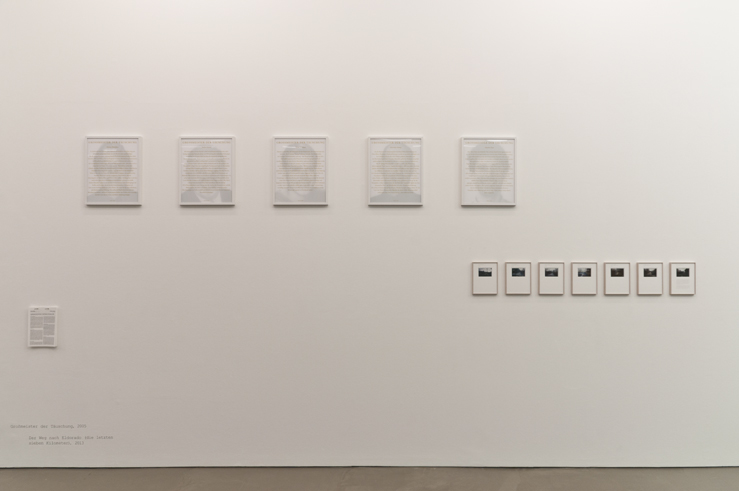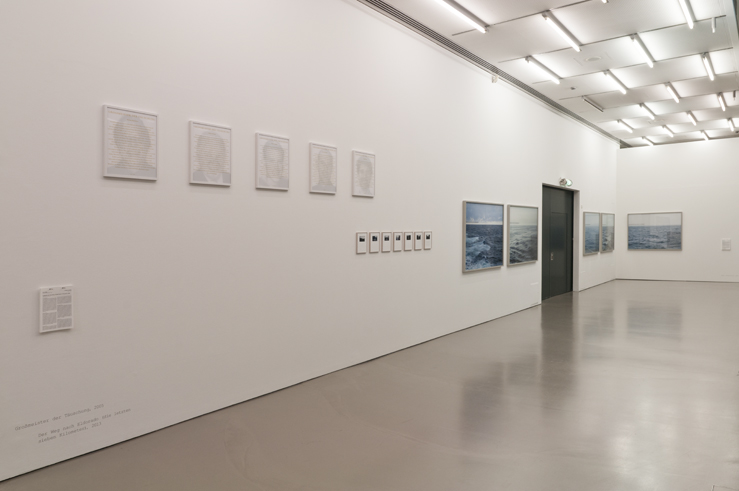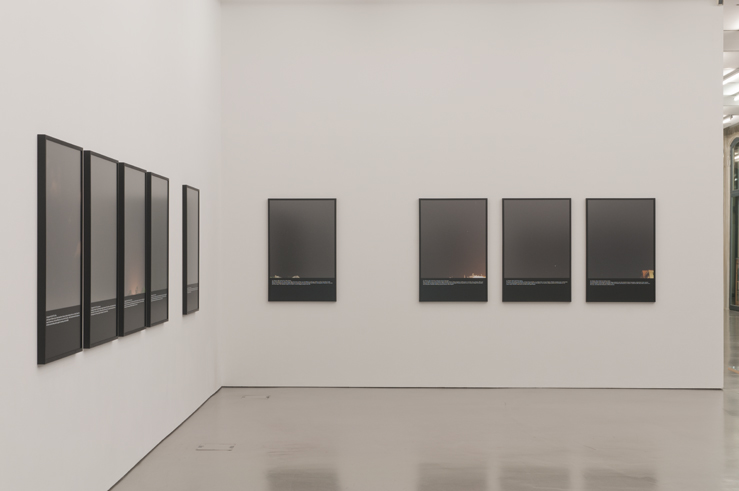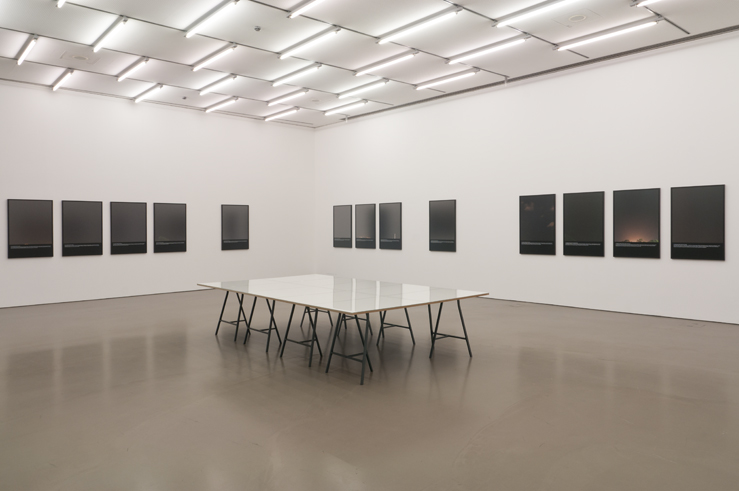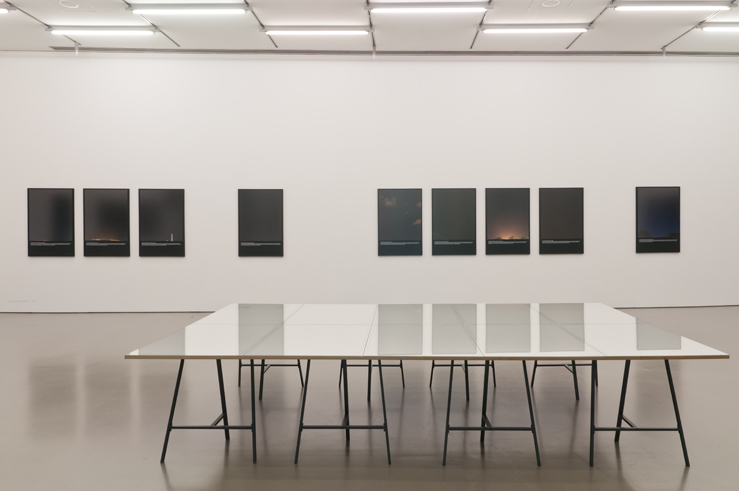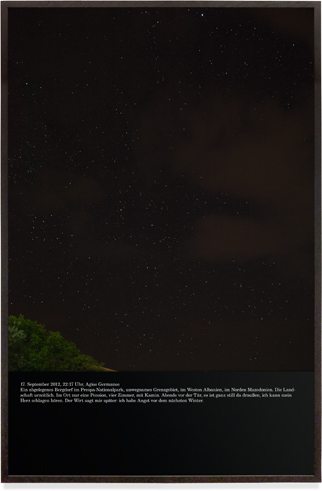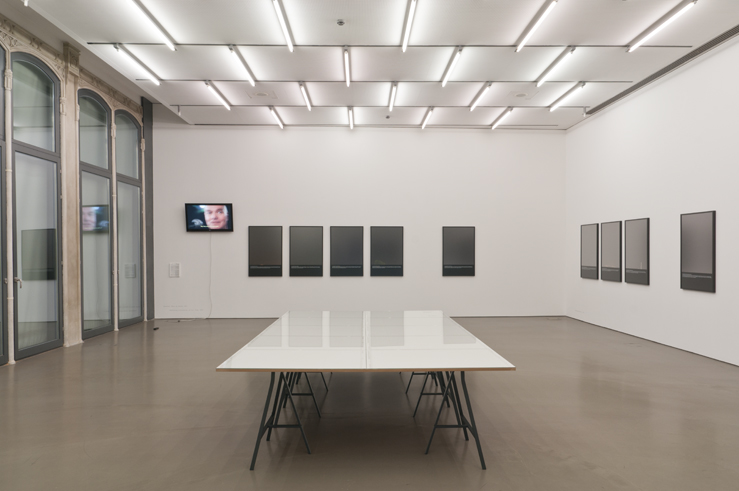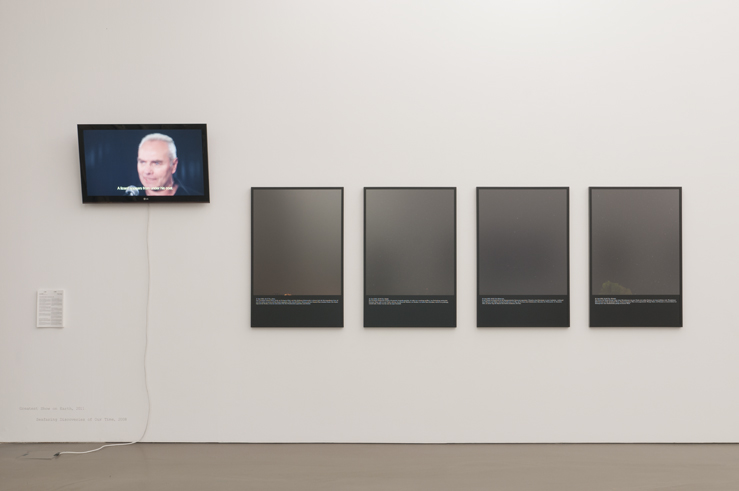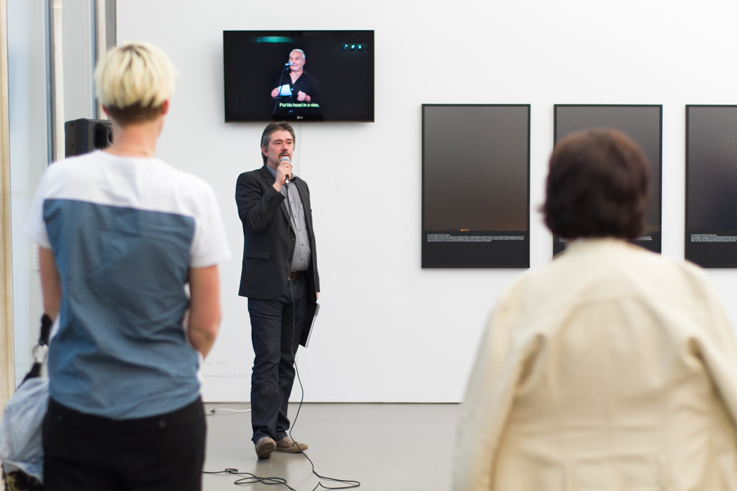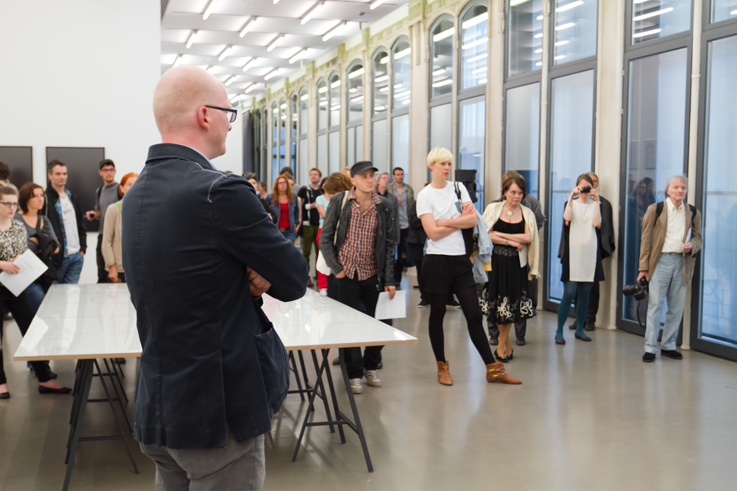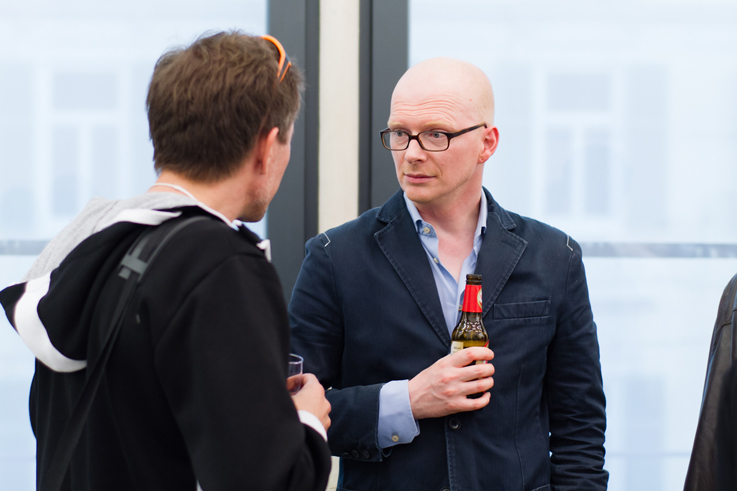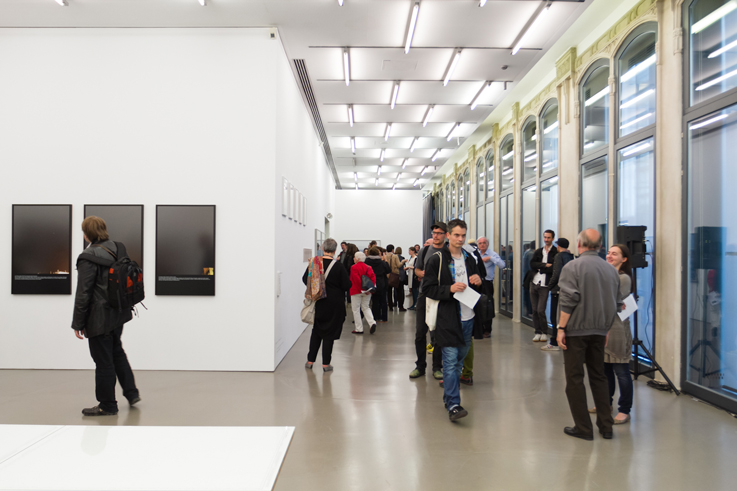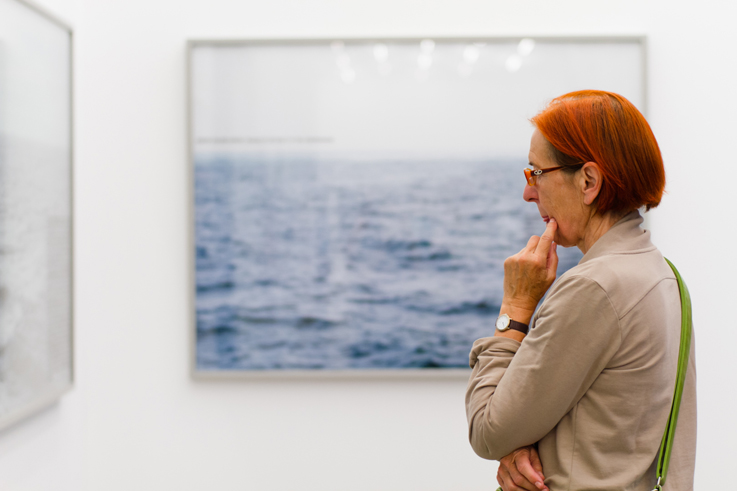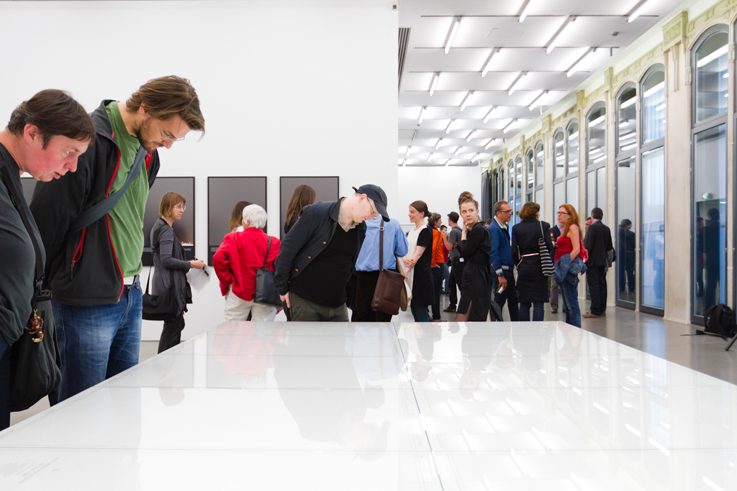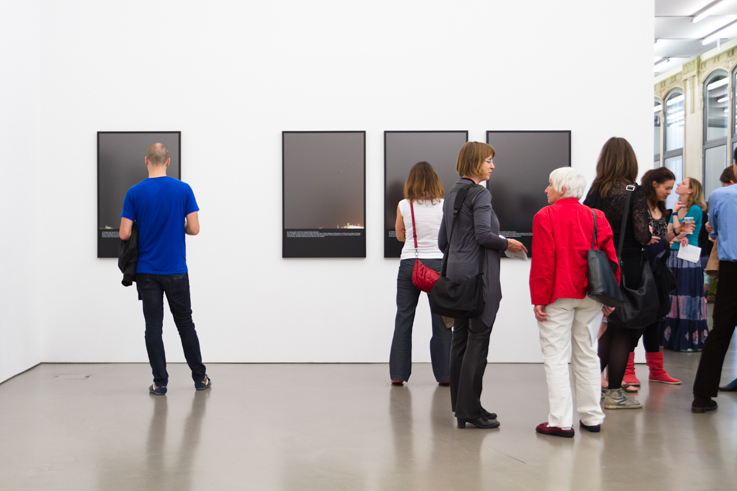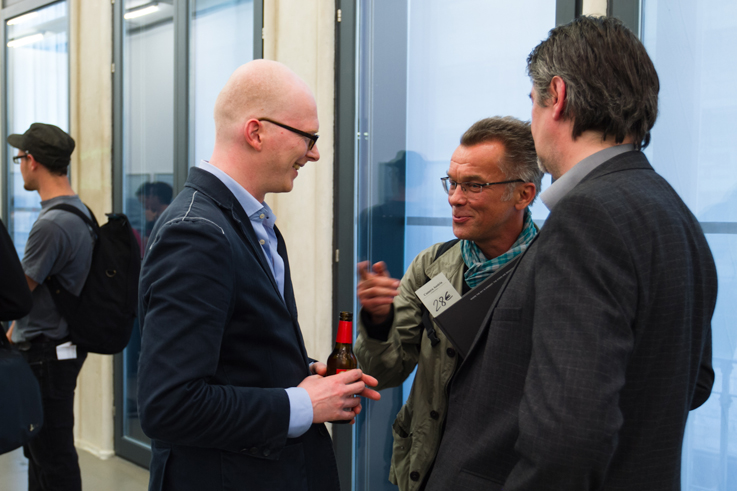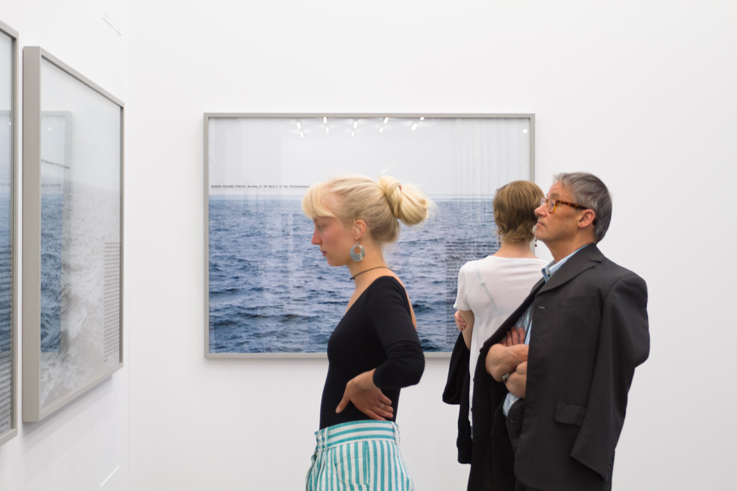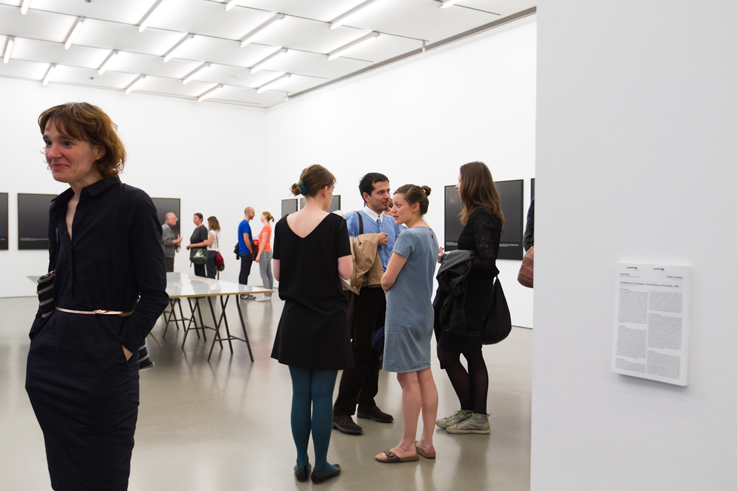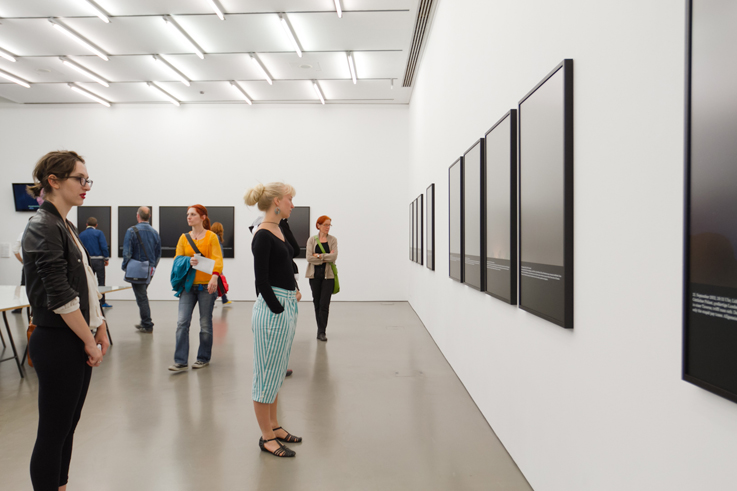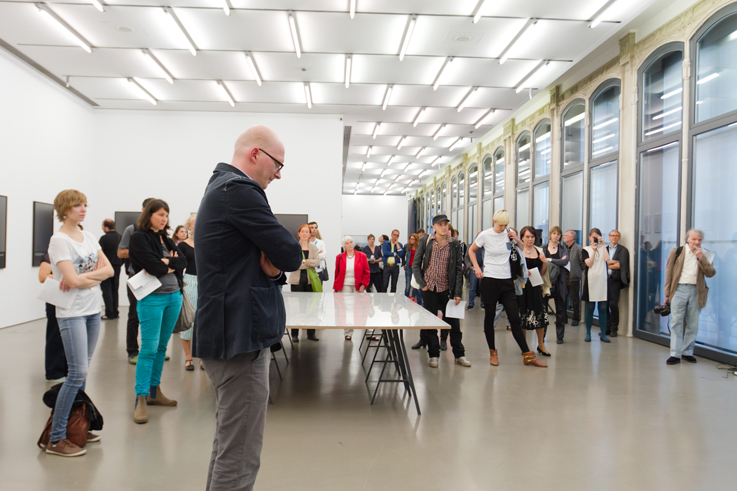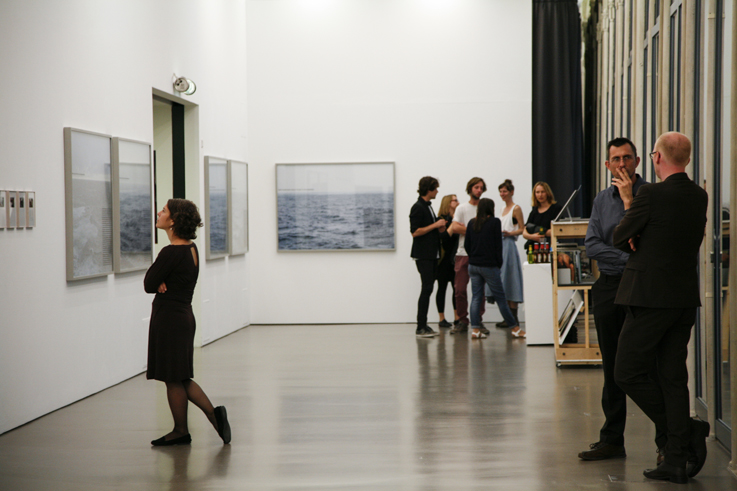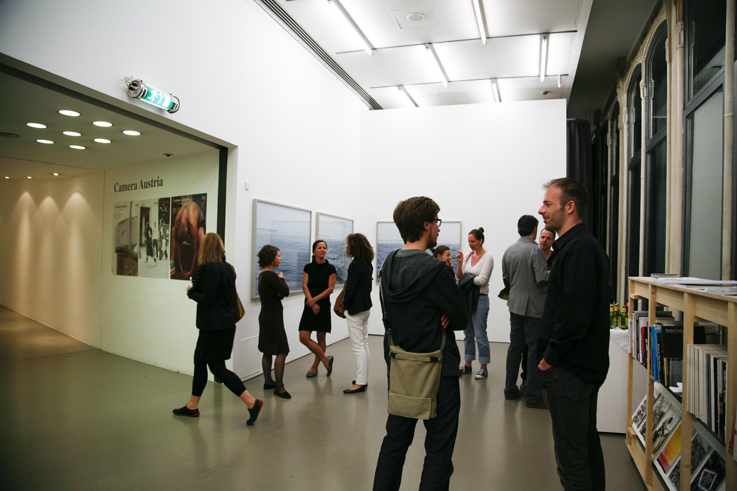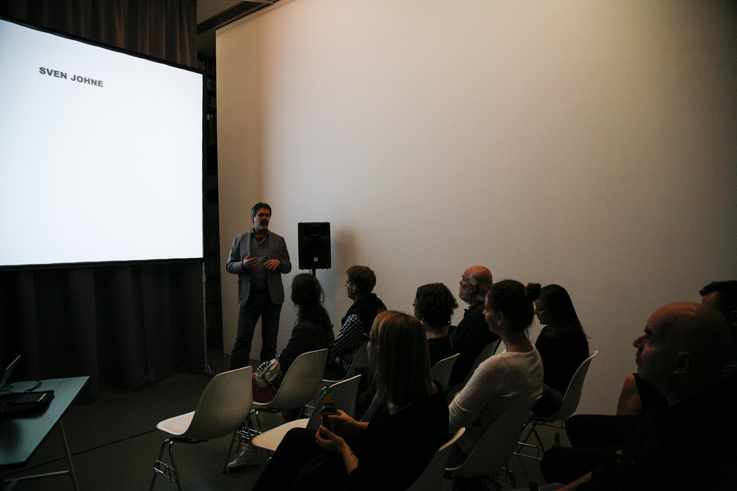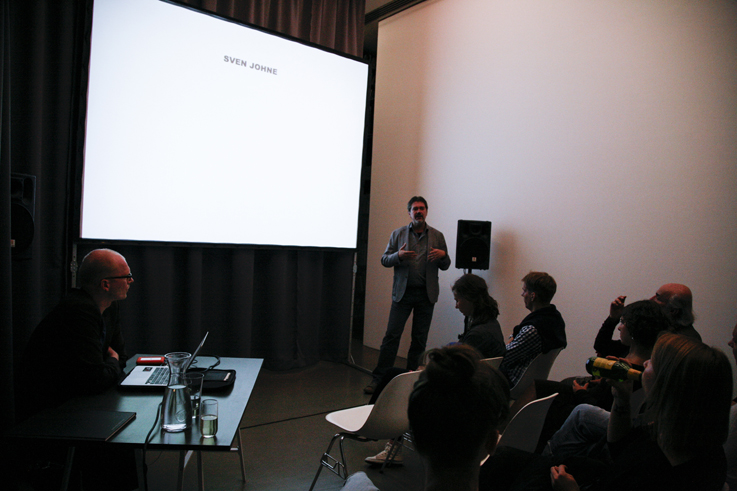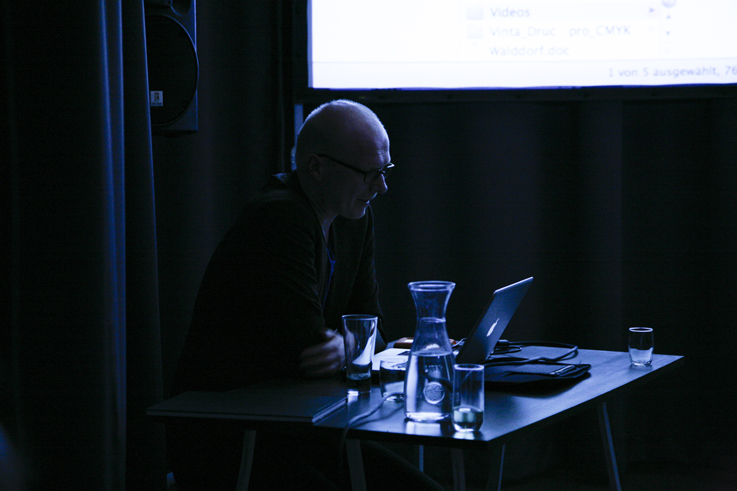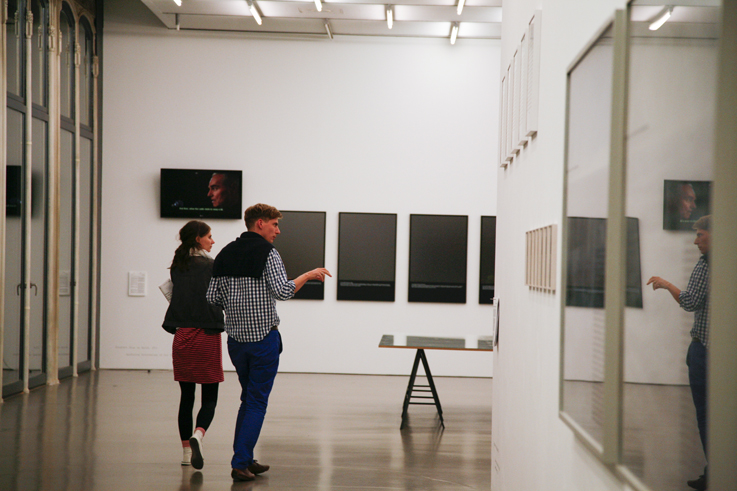Sven Johne
Where the sky is darkest, the stars are brightest.
Infos
Duration
8.6.2013 – 1.9.2013
Opening
7.6.2013, 7pm
Video screening
and artist’s talk
30.8.2013, 7pm
Sven Johne
Where the sky is darkest, the stars are brightest.
Intro
For many years now, the multifaceted field of documentary photography and its interlinkage with texts, information, stories and history has taken center stage in Sven Johne’s photographic practice. In his works—often based on research on site—he systematically deals with the relationship between what can be experienced and known and what can be shown and communicated about it. In the process, it becomes clear time and again that documentary images are not exclusively an element of the visible but that a fundamental dependence on words and knowledge is inscribed in them—that a shift in the status of the images, an uncertainty with regard to their possibilities of producing meaning is the result.
For his first extensive solo presentation in Austria, the artist combines a selection of works from recent years with new projects which pinpoint this precarious, controversial and increasingly questioned space of “documentality” (Hito Steyerl) of the visual in the world of today. In this respect, the exhibition project focuses on the specific practices and methods in which Sven Johne involves the photographic image in different projects in different places: the claim for reportage, the interest in marginal events, the missing of representation, the gap between text and image—whereby the artist outlines an essential contribution to the current debate circling around the documentary.
Read more →Sven Johne: Where the sky is darkest, the stars are brightest.
For many years now, the multifaceted field of documentary photography and its interlinkage with texts, information, stories and history has taken center stage in Sven Johne’s photographic practice. In his works—often based on research on site—he systematically deals with the relationship between what can be experienced and known and what can be shown and communicated about it. In the process, it becomes clear time and again that documentary images are not exclusively an element of the visible but that a fundamental dependence on words and knowledge is inscribed in them—that a shift in the status of the images, an uncertainty with regard to their possibilities of producing meaning is the result.
For his first extensive solo presentation in Austria, the artist combines a selection of works from recent years with new projects which pinpoint this precarious, controversial and increasingly questioned space of “documentality” (Hito Steyerl) of the visual in the world of today. In this respect, the exhibition project focuses on the specific practices and methods in which Sven Johne involves the photographic image in different projects in different places: the claim for reportage, the interest in marginal events, the missing of representation, the gap between text and image—whereby the artist outlines an essential contribution to the current debate circling around the documentary.
For his most recent “Griechenland-Zyklus” (Greek Cycle), Sven Johne has traveled to different mainland places and islands in Greece since 2012 which can also be found in any tourist brochure (Syntagma Square in Athens, Mykonos, Delphi, Corinth, Corfu etc.). He took a photo of the starry night sky in all of these places— then he noted down date, time and place, and added a diary entry to each photo: “25 August 2012, 02:08 am, Chora, Mykonos Island: And here they are moored, the yachts of the tax fugitives, says the taxi driver, what affluence! Does Mykonos still belong to Greece? The two of us have fun. But the harbor is going to be privatized in the very near future. Downtown luxury shops, jewelry and expensive hotels. I can’t find a room. Finally, at two in the morning, I am ready to pay any price.”
Separately, all elements of this project—the places, the photos, and the texts—do not aim at anything essential: On site, there isn’t any truth to be discovered, or any crucial and exemplary representation to be wrested from any individual specific presence. Moreover, the lower part of the glazing of the prints shown in the exhibition is covered by a silkscreen surface, where the visitors can read the associated diary entry. Hence, also the last possibility to identify an actual place on the basis of details of landscapes or buildings is made impossible and masked out by this text box.
In this new work, Sven Johne continues a strategy which can also be spotted in other works presented in the exhibition—”Großmeister der Täuschung” (2005), “Ship Cancellation” (2004), or “Ostdeutsche Landschaften” (2005)—and which could be described as the simulation of documentary reportage. Simulation insofar as the individual starting points of interest—unusual public acts and personal fates, shipwrecks, the effects of the crisis in Greece—cannot be retrieved in a comprehensible and coherent project background but are for the most part juxtaposed in unexpected ways (the Wehrmacht massacre of Kalavryta in 1943, the African peddlers in Patras, an innkeeper in Agios Germanos etc.). Moreover, even these individual actual events and encounters are not translated into figurative representation: What is shown is neither the peddlers nor Syntagma Square but always only the starry night sky, with a superimposed text, which also rather links disparate details to the image than comments on it or integrates it in a superordinate narrative.
It is local events, moments of stepping out of order, which attract the artist’s attention and from which he builds a mosaic of details. It is under the starry night sky as a metaphor for order and navigation where he staged these incoherent details, like an odyssey that requires cunning to reach one’s destination. What we get from the laboratory of the neoliberal annihilation of an entire country is only pictures of its night sky and the artist’s anecdotes from his trips. Hence, the future is more than uncertain, and this work presents ambivalent motifs between aberration, hope and salvation.
What has been created is a reportage whose form pretends to act like reportage. And it is more than anything else this “dissonance” between the image and its meaning, between the image and the “event”, the shift between what can be seen and what can be said, what the text ‘shows’, which reveals the fundamental ambivalence between “discourse” and “document” inherent in the documentary: Documentary images were put under general suspicion already a long time ago, their truthfulness was dismissed, and our trust in what they show disappeared. Nevertheless, these documentary images are proliferating more than ever within a large number of media environments.
It is by separating the elements which must meet in order to link an image to any specific meaning that Sven Johne exhibits his specific examination of the documentary. In this way he provides an important contribution to opening up possibilities; to conceiving new linkages to meaning by means of images, especially documentary ones; to introducing a basically open space of meaning production which can be understood as a space for other visual politics.
Sven Johne
Born in Bergen, island of Rügen, in 1976, lives and works in Berlin.
Among his most recent solo exhibitions there are “Der Weg nach Eldorado”, KLEMM’S, Berlin (2013); “Following the Circus”, Galerie Christian Nagel, Antwerp (2012); “Greatest Show on Earth”, KLEMM’S, Berlin (2011); “Photographic and Video Work”, Hong Kong Arts Centre, Hong Kong (2011); and “Berichte zwischen Morgen und Grauen”, Frankfurter Kunstverein.
He participated i.a. in “Making History”, Frankfurter Kunstverein and MMK Museum für Moderne Kunst Frankfurt; “Made in Germany Zwei”, Sprengel Museum, Hannover; “Cantemus—Choirs, the Sublime and the Exegesis of Being”, ARGOS, Brussels; and “Doppelte Ökonomien”, Halle 14, Leipzig (all 2012).
A monographic contribution by Sven Johne with a text by Susanne Holschbach was published in Camera Austria International 118/2012.

